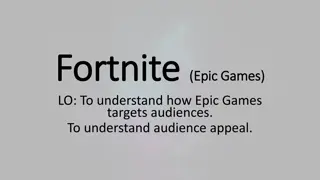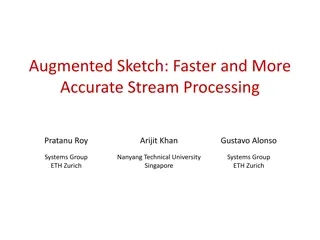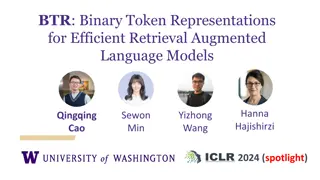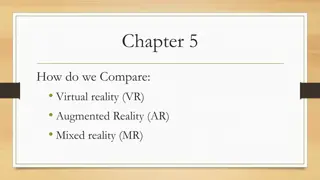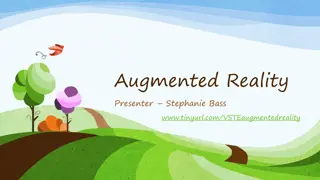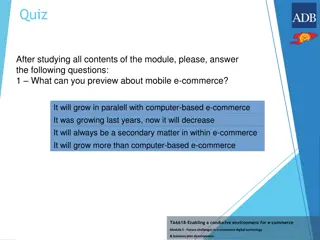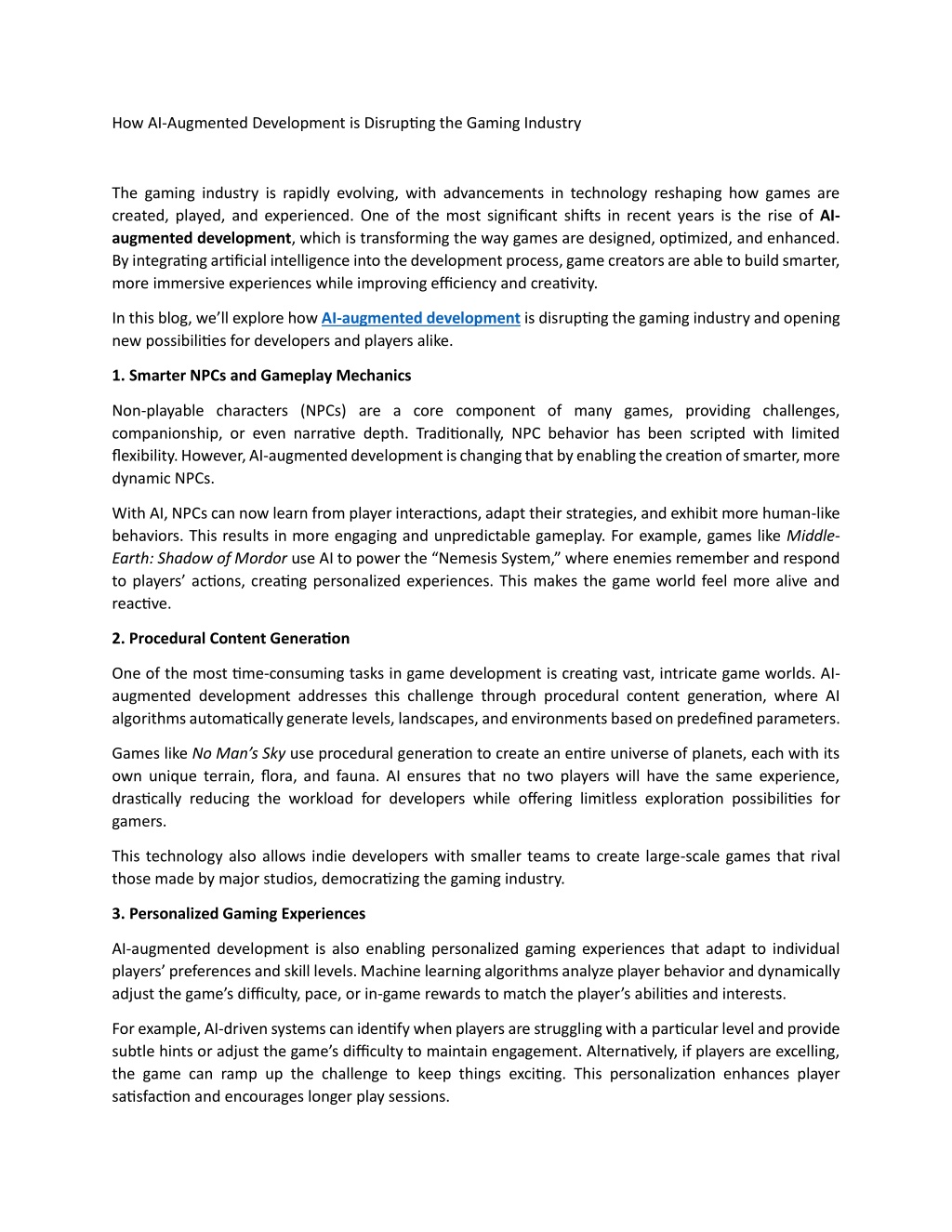
How AI-Augmented Development is Disrupting the Gaming Industry
The gaming industry is rapidly evolving, with advancements in technology reshaping how games are created, played, and experienced.
Download Presentation

Please find below an Image/Link to download the presentation.
The content on the website is provided AS IS for your information and personal use only. It may not be sold, licensed, or shared on other websites without obtaining consent from the author. Download presentation by click this link. If you encounter any issues during the download, it is possible that the publisher has removed the file from their server.
E N D
Presentation Transcript
How AI-Augmented Development is Disrupting the Gaming Industry The gaming industry is rapidly evolving, with advancements in technology reshaping how games are created, played, and experienced. One of the most significant shifts in recent years is the rise of AI- augmented development, which is transforming the way games are designed, optimized, and enhanced. By integrating artificial intelligence into the development process, game creators are able to build smarter, more immersive experiences while improving efficiency and creativity. In this blog, we ll explore how AI-augmented development is disrupting the gaming industry and opening new possibilities for developers and players alike. 1. Smarter NPCs and Gameplay Mechanics Non-playable characters (NPCs) are a core component of many games, providing challenges, companionship, or even narrative depth. Traditionally, NPC behavior has been scripted with limited flexibility. However, AI-augmented development is changing that by enabling the creation of smarter, more dynamic NPCs. With AI, NPCs can now learn from player interactions, adapt their strategies, and exhibit more human-like behaviors. This results in more engaging and unpredictable gameplay. For example, games like Middle- Earth: Shadow of Mordor use AI to power the Nemesis System, where enemies remember and respond to players actions, creating personalized experiences. This makes the game world feel more alive and reactive. 2. Procedural Content Generation One of the most time-consuming tasks in game development is creating vast, intricate game worlds. AI- augmented development addresses this challenge through procedural content generation, where AI algorithms automatically generate levels, landscapes, and environments based on predefined parameters. Games like No Man s Sky use procedural generation to create an entire universe of planets, each with its own unique terrain, flora, and fauna. AI ensures that no two players will have the same experience, drastically reducing the workload for developers while offering limitless exploration possibilities for gamers. This technology also allows indie developers with smaller teams to create large-scale games that rival those made by major studios, democratizing the gaming industry. 3. Personalized Gaming Experiences AI-augmented development is also enabling personalized gaming experiences that adapt to individual players preferences and skill levels. Machine learning algorithms analyze player behavior and dynamically adjust the game s difficulty, pace, or in-game rewards to match the player s abilities and interests. For example, AI-driven systems can identify when players are struggling with a particular level and provide subtle hints or adjust the game s difficulty to maintain engagement. Alternatively, if players are excelling, the game can ramp up the challenge to keep things exciting. This personalization enhances player satisfaction and encourages longer play sessions.
4. Real-Time Game Testing and Optimization Game testing and debugging are critical aspects of game development, but they can be time-consuming and labor-intensive. AI-augmented development is streamlining this process through automated testing and real-time optimization. AI-driven testing tools can simulate millions of gameplay scenarios, identifying bugs, glitches, and performance bottlenecks far faster than human testers. These tools also ensure that games run smoothly across different platforms and configurations, improving overall quality. Additionally, AI can be used to optimize game performance in real-time by dynamically adjusting graphics settings, frame rates, and resource usage based on the player's hardware. This ensures that gamers have a seamless experience, regardless of their system's capabilities. 5. Enhanced Game Development Efficiency One of the key benefits of AI-augmented development is the increase in efficiency it brings to game creation. AI tools help automate repetitive tasks such as coding, asset creation, and animation. For example, AI-assisted animation tools can create realistic character movements or facial expressions by analyzing motion-capture data, saving animators countless hours of manual work. By offloading these tasks to AI, developers can focus on higher-level creative decisions, such as storytelling, game mechanics, and player engagement, leading to faster development cycles and more innovative games. Conclusion AI-augmented development is disrupting the gaming industry by enabling smarter NPCs, generating vast worlds, personalizing player experiences, and streamlining game development. These advancements allow developers to create more immersive, dynamic games while reducing the time and effort needed to bring these games to life. As AI technology continues to evolve, it will further push the boundaries of what s possible in gaming, opening up new opportunities for developers and delivering even richer experiences for players. The future of gaming is undoubtedly tied to the continued integration of AI, making it one of the most exciting frontiers in entertainment. Read More: https://techhorizonsolutions.blogspot.com/2024/09/how-ai-augmented-development- is.html



